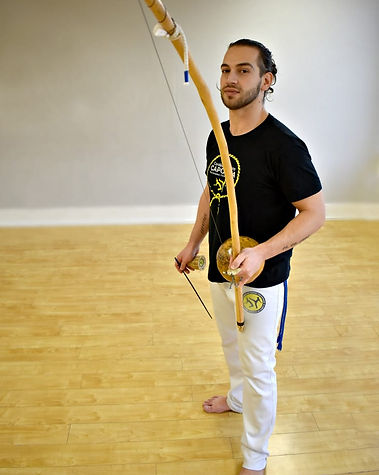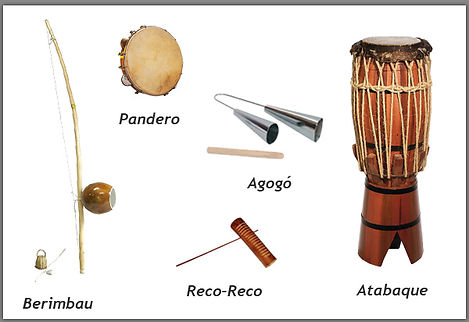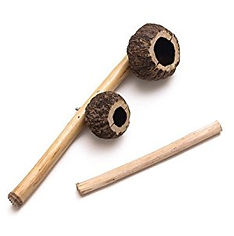
ABOUT US
THE CANADIAN CENTRE FOR CAPOEIRA
The Canadian Centre for Capoeira is a Toronto Based Capoeira school that offers Capoeira classes in North York area and hold regular classes throughout the week for children&adults of all levels. Since its beginning, The Canadian Centre for Capoeira has been working hard to promote the art of Capoeira and introducing it to the community by teaching capoeira workshops at kids' camps, after school programs, performing at festivals, fairs and fundraisers. The Canadian Centre for Capoeira is constantly growing and more people are joining and becoming part of our Capoeira community every day.
The Canadian Centre for Capoeira(also known as TCC4C) belongs to one of the biggest Capoeira schools in the world with branches in USA, Mexico, Brazil, England, Italy, Israel, Germany, France, Russia, India, Indonesia, Australia and many other countries around the world.




FOUNDER

INSTRUTOR FOFUXO(FO-FU-SHO)
Vadim Podosyan(Instrutor Fofuxo) was introduced to Capoeira at the age of 13 by a friend of his family. He started training Capoeira in Israel under the supervision of Mestre Cueca and Mestre Edan. Shortly after he fell in love with this beautiful art form and realized that this is what he wants to do for the rest of his life.
In 2008 he arrived in Toronto, Canada to visit family and decided to settle there. He continued training while travelling the world and developing his Capoeira skills, training and teaching in countries like India, Russia, Israel, Brazil, United States, Mexico, Germany, Italy and Turkey and in 2015 he founded the Canadian Centre for Capoeira.
Since then Instrutor Fofuxo has been working hard to develop and spread the art of Capoeira in Toronto and Canada, teaching adults, teenagers and kids as well as teaching and practicing the values&disciplines a Capoeirista should possess as a way of life.
Due his many travels around the world learning and spreading Capoeira, Fofuxo is proficient in English, Hebrew, Russian, Portuguese and Spanish.
He strongly believes that giving back to the community through workshops, shows and other educational events that help spread the art of Capoeira is a vital part of what Capoeira stands for.
Nowdays, under the guidance of Mestre Cueca, Instrutor Fofuxo continues to develop his knowledge of Capoeira and represent the Canadian Centre for Capoeira in Canada and abroad.
FOUNDER AND HEAD INSTRUCTOR OF THE CANADIAN CENTRE FOR CAPOEIRA

MUSIC
Music is a vital and inseparable part of Capoeira. It sets the rhythm, style of play, and the energy of the game. The rhythms differ from very slow to very fast.
The music in Capoeira is usually comprised of instruments and a song.
In its most traditional setting, there are three main styles of songs that can be sung in the capoeira Roda(Ho-da): most of the songs are sung in a call and response format(quadras and corridos) while others are in the form of a narrative (ladainha).
Capoeiristas may sing about a wide variety of subjects:history or stories of famous capoeiristas,life or lost love, what is going on within the roda, a personal challenge from one Capoeirista to another or sometimes even silly and lighthearted songs sung simply for fun.
The main instruments used in capoeira music are Berimbau, Atabaque, Pandeiro, Agogô, and Reco-Reco. A Capoeira orchesta called a Bateria, features all these instruments with the Bateria leader playing the Berimbau and setting the tone for the game. The Berimbau will usually be played by the Instructor/Mestre of the group or one of the most advanced students.
The rhythmic combinations of the Berimbau can command and suggest significant variations in movement&playing style between the two players in the roda. In this manner, it is truly the music that drives capoeira, as the roda begins and ends at the discretion of the lead Berimbau player, who may determine who plays next, can stop games, set the rhythm of the music, and calm the players if they get too rough.
Not all Capoeira groups use all the instruments at all times and different groups may use different combinations of them(example: 2 Berimbau, 2 pandeiro).

Understanding songs in capoeira is a good way to grasp and understand early Brazilian life and history. If one can identify with the music on a personal level, it goes a long way in adopting the heritage vital in the maintenance of capoeira as a cultural force. The songs of capoeira partly play the role of cultural guide and teacher.
INSTRUMENTS
Capoeira without music is like air without oxygen. And it is the instruments that help bring soul and energy to the capoeira game. There are five main instruments used in capoeira:
BERIMBAU
The Berimbau is stringed percussion instrument that looks like musical bow. It consists of an arc of Biriba wood about 1.6 meters long(sometimes longer/shorter) and 2.5 centimeters thick, called the Verga. The lower end of the Verga is carved into a peg to attach the wire (Arame), which is then stretched tight over the top end of the Verga, bending it.
The instrument is held in the left hand(if you are a righty) with the opening of the Cabaça facing the body. It is balanced on the pinky finger, and a coin (Dobrão) or stone is held between the left thumb and forefinger; this serves to press against the Arame and alter the pitch. The right hand holds the Caxixi(KA-SHI-SHI), a rattle woven of wicker with seeds, seashells, or pebbles inside, as well as the Baqueta, a thin wooden stick used to strike the Arame.
The Berimbau comes in 3 sizes.
The Gunga has the largest Cabaça and most flexible Verga. It has the deepest sound, and in the roda it is responsible for keeping the basic rhythm.
The Médio has a medium-sized Cabaça. In the roda, playing the inverse of the Gunga’s rhythm.
The Viola or Violinha has the smallest Cabaça, the stiffest Verga, and the highest, sharpest sound. Its role is to improvise, embellish, and play variations on the rhythm.


ATABAQUE
The Atabaque is a tall Conga-like hand drum.
The body of the Atabaque is usually made of Jacaranda wood and the head, fastened to the body by ropes, of calfskin.
The Atabaque maintains the beat and secures the pace of the rhythm being played in the roda, almost like a heartbeat in a human body.
There are three sizes of this instrument: Rum (the tallest with the lowest sound), Rum-pi (medium height and medium sound) and Lê (shortest with the highest sound). Multiple Atabaque are generally used in Maculelê and in Candomblé ceremonies, but the capoeira roda typically uses only one.
PANDEIRO
The Pandeiro, originally from East Africa, is a type of hand frame drum, relative to the Tambourine.
The difference between them is that the Pandeiro has a drumhead that is tunable and allows the player to change the pitch and tone of the instrument.
This instrument’s head may be made of leather, snakeskin, or plastic.
It is held in one hand, and struck on the head by the other hand to produce the sound. Typical Pandeiro patterns are played by alternating the thumb, fingertips, heel, and palm of the hand. A Pandeiro can also be shaken to make sound, or one can run a finger along the head to produce a drum roll.
Capoeira, samba, reggae, and many other forms of Brazilian&international music all utilize this instrument. The Pandeiro was adapted to many kinds of songs, due to its low sound power blending with vocals and acoustic guitars, as well as many other types of instruments.



AGOGO
The Agogo is an African musical instrument whose name means “bell”. There are 2 types of Agogo- a coconut Agogo and iron Agogo. both can be used in Capoeira.
The iron Agogo consists of two hollow iron cones that are struck with a stick. The bells are typically tuned a fourth or a fifth apart, while the coconut Agogo is made of two dry coconuts which create 2 different sounds. The Agogo is also used in candomblé.
RECO-RECO
The Reco-Reco(HEH-KOO-HEH-KOO) is a section of bamboo with notches cut into the side; it is played by rubbing a stick back and forth over the grooves. The Reco-Reco is believed to originate from the indigenous peoples of Brazil. It is also used in samba and reggae.
